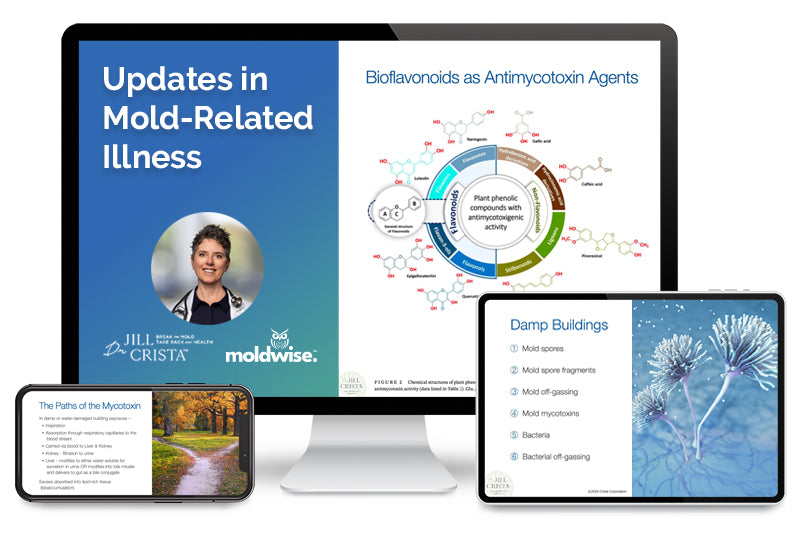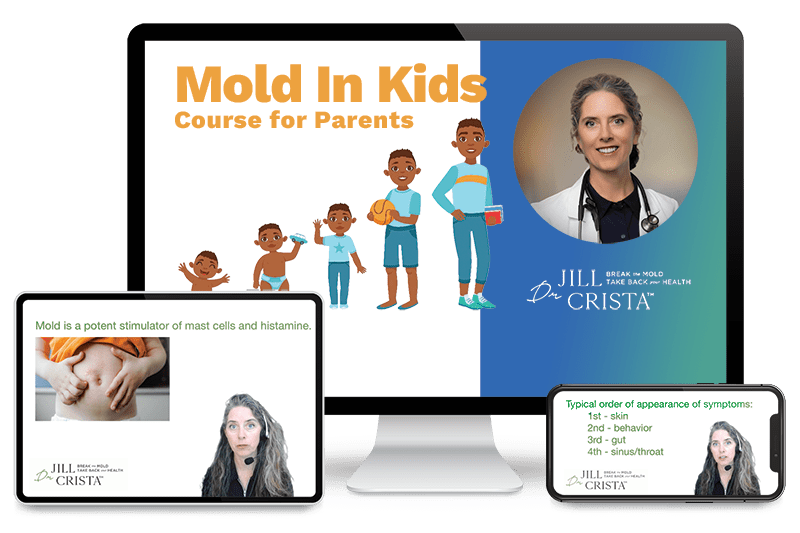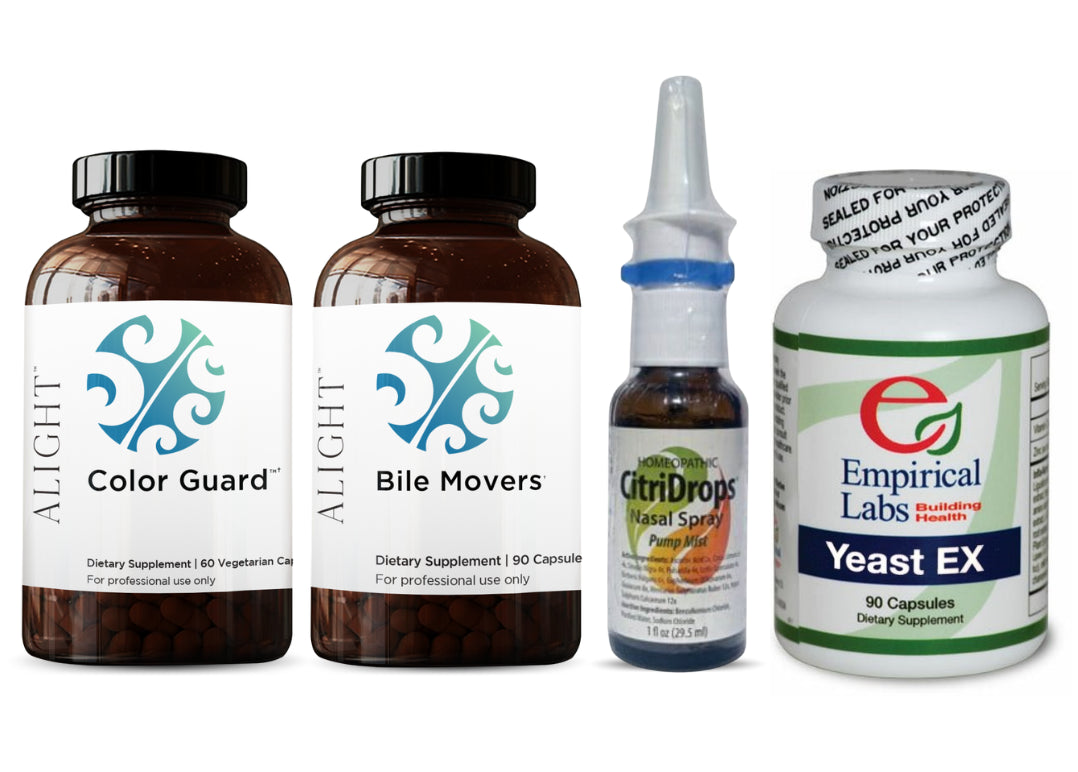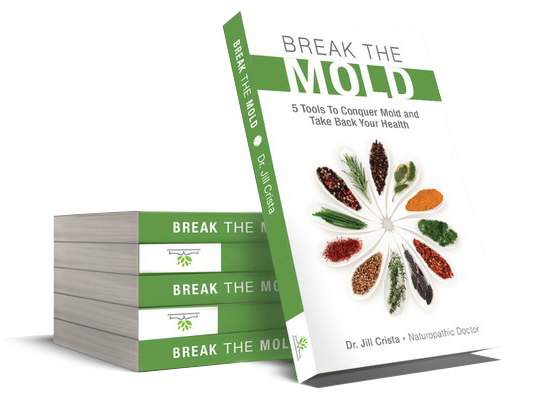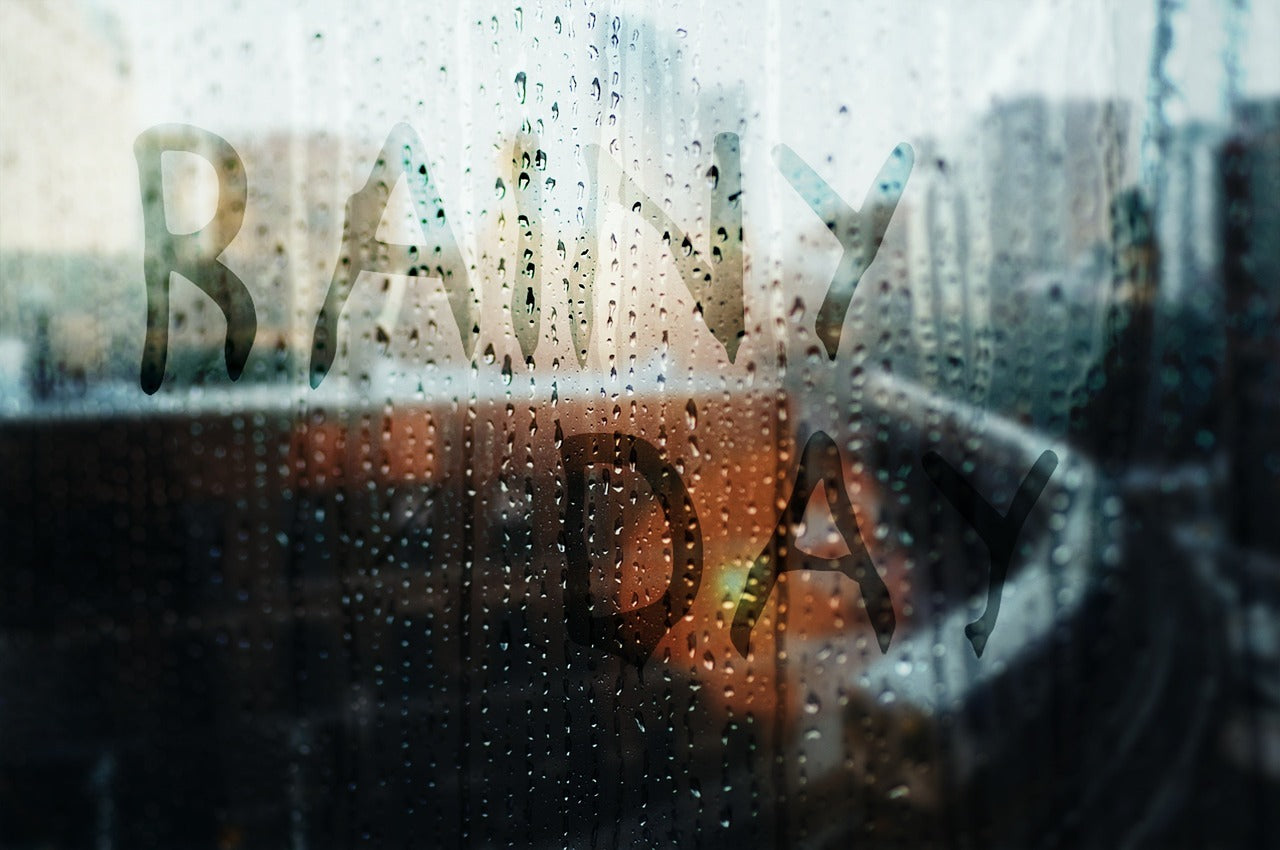Noticing more sniffles or bloating when it rains? Hi there, I’m Dr. Jill Crista, naturopathic doctor, mold expert, and author of Break the Mold. If rainy days seem to bring on symptoms you don’t feel on sunny days, mold might be the reason.
The good news? You can find out. Let’s explore how rainy weather fuels mold symptoms and how you can start feeling better.
Why Rainy Days Trigger Mold Symptoms
When it rains, the colors pop, plants grow, and fungus thrives too. Here’s why rainy days are tough for mold-affected people:
- Fungal Growth: Wet conditions are the perfect breeding ground for mold and fungus, which can trigger symptoms in mold-sensitive individuals.
- Worsened Symptoms: If you’re mold-sick, you may feel worse on rainy days compared to dry ones.
- Hidden Triggers: Flare-ups during wet weather may point to an underlying mold problem.
Common Symptoms of Fungal Overload
If rainy days bring these on, mold might be the reason:
- Sinus Issues: Nasal congestion, dripping nose, and postnasal drip
- Lung Discomfort: Chest tightness, coughing, or shallow breathing
- Digestive Problems: Bloating and abdominal pain that worsens in damp weather
These are signs of fungal overload, and they don’t have to be your normal.
How to Identify Mold Sickness
If you’re wondering if you might have mold sickness, score yourself. Here’s how:
- Take the Questionnaire: My Mold Questionnaire helps you determine the likelihood that mold is behind your symptoms.
- Score Yourself: Track what symptoms show up when it rains, then compare with the questionnaire results.
- Begin Healing: Knowing your mold status is the first step toward getting better.
Tips to Manage Mold Symptoms on Rainy Days
You can break it and enjoy the beautiful pop of color on rainy days, rather than dread them. Here’s how to feel better:
- Try Antifungal Herbs: Add thyme or oregano to your meals for gentle antifungal support.
- Manage Humidity: Keep indoor air dry to reduce mold levels in your living space.
- Use the Questionnaire: Check whether mold is affecting you so you can start applying the tools in my book, Break the Mold, and take informed action.
- Consult a Pro: Work with a mold-literate practitioner, like those listed at NAEM and ISEAI.
These small steps can make a big difference when the weather turns wet.
You’re Ready to Break the Mold and Thrive!
Rainy days don’t have to bring on foggy heads, sinus pressure, or bloating. With the Mold Questionnaire and a few simple changes, you can take back your health and enjoy even the dampest days.
💚 Save this guide, share it with a friend navigating mold symptoms, and join my newsletter for more mold-smart recovery tips.
Disclaimer This content is health information and not intended as personal medical advice. Viewing will not establish a doctor-patient relationship. It is not intended to diagnose, treat, cure, or prevent any disease or medical condition. The information discussed is not intended to replace the advice of your healthcare provider. Reliance on information provided by Dr. Jill Crista, employees, or others appearing at the invitation of Dr. Crista is solely at your own risk.

